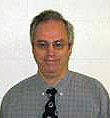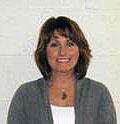Introduction
The largest underserved population in the USA is rural: 20% of its citizens live in a rural area, although only 9% of its physicians practice there1,2. This underserved group exceeds in size even Latinos (14.8%), Blacks (13.1%), Asians (4.9%) and First Nations or Native Americans (1.4%)3. While various strategies have been used to address the physician shortage in rural areas, one of the simplest methods is to admit students to medical school who have a rural background. Physicians who practice in rural areas are more likely to have been raised in a rural area4,5, and medical students who are from a rural background are more likely to return to a rural area to practice6.
Family medicine (frequently known as general practice elsewhere in the world) is the only medical discipline in the USA that does not have a disproportionately increased concentration of physicians in urban areas but distributes evenly across all populations, including rural populations, where 25% of the family physicians in the nation practice7. A rural medical student who matches into a family medicine residency has a much higher probability of eventually practicing in a rural area6 where a broad range of skills are needed8.
In New York State, which has only half the concentration of family physicians compared with the nation as a whole (6% vs 12%), there is a somewhat less equitable distribution9. In New York City where 4 of the 9 medical schools do not have a department of family medicine, only 4% of its physicians are family physicians (2/3 the statewide rate) in contrast to the rural areas where 16% are family physicians (2œ times the statewide rate)9. In the four other large urban areas of Buffalo, Syracuse, Rochester and Albany, which each have medical schools with departments of family medicine, the concentration of family physicians equals the statewide average of 6%.
We were interested in determining the influence of rural roots, defined as the location of a student's high school in a rural area, on the entry of a New York medical student into a residency in family medicine, independent of other variables. The index medical school trains for a broad range of specialties. It does not have a stated primary care mission, a rural mission or a rural training program for medical students. Additionally, over 90% of the medical school's curriculum is identical for each medical student. We hypothesized that the social milieu in which students are raised prior to college can independently influence their selection of family medicine as their professional specialty.
Methods
A retrospective case-control design was used, with two arms: a study group and a control group. The study group consisted of the graduates of the medical school at the University at Buffalo who entered a residency in family medicine over a 16 year period from 1989 to 2004. The control group was an equal number of graduates who entered any specialty other than family medicine over the same period. For each graduate who entered a family medicine residency, the control student was the next graduate alphabetically who entered a different specialty. There were 181 graduates in each group.
Each student entered into the study also needed to be a graduate from a high school in New York State, which was so for 90% of all graduates entering either a family medicine residency or other residency. The data were obtained from two sources: the National Residency Match Program and the American Association of Medical Colleges' Graduate Student Questionnaire.
For the purpose of this analysis, the sizes of the cities in which the high schools are located were divided into four groups: rural, small city, urban, and the metropolitan area of New York City (NYC). A rural town had a population of up to 10 999. A small city was 11 000 to 60 000 population in size. An urban area referred to the 2nd, 3rd, 4th and 5th largest cities in the state (Buffalo, Syracuse, Rochester and Albany) including their contiguous suburbs - all metropolitan areas that ranged in size from a population of 100 000 to 950 000. The NYC area included the 5 counties (or boroughs) of NYC as well as the 2 contiguous northern counties (Rockland and Westchester) and the 2 eastern counties on Long Island (Suffolk and Nassau), a 9 county metropolitan area collectively and colloquially known as 'downstate' - an area that represents 2/3 of the state's population.
If a town was ≥15 km from the outer edge of an urban area, it was considered to be a separate entity. While the five largest cities in the state have associated suburbs, the remainder of the cities are 60 000 or less in population without suburbs. Although a few areas in the Hudson River Valley north of the downstate area are long-distance commuter areas into NYC for employment, the local communities are used predominantly for education, health, commerce, religion and socialization.
There are 62 counties in the state of New York. The nine counties comprising the NYC metro area contains 63% of the population of the entire state (12.3 M out of 19.3 M); the four counties which contain the other four largest cities collectively have 24% of the state's population (4.6 M); and the remaining 49 counties, which are predominantly rural, have 13% (2.5 M).
The independent variable is the size of the city of the student's high school graduation. The dependent variable is the selection of a family medicine residency. The data for the independent variable is categorical and represented by four possible categories: rural; small city; urban; and metropolitan NYC. The data for the dependent variable is likewise categorical and represented by two possible categories: entry into a family medicine residency; and entry into a residency other than family medicine. Because the variables are categorical - that is, separable into categories that are mutually exclusive - the statistical calculation was performed using an odds ratio, which is a measure of the strength of association between the independent and dependent variables. Microsoft compatible software from SPSS (SPSS Inc; Chicago, IL, USA) was used to calculate the odds ratio (OR).
Results
Each year, a mean of 11.3 of all of the graduates from the index medical school entered a family medicine residency, ranging from five to 19 per year, 8% of all students. Although there was a trend towards females and whites among those who entered a family medicine residency, there was not a significant difference in characteristics of those in the study and control groups: age (23 vs 23); college performance (3.57 vs 3.60 GPA); gender (48 vs 41% female, OR 1.34, 95% confidence interval [CI] 1.0-1.7, p 0.17); and race (24 vs 19% white, OR 1.33, 95% CI 0.6-2.1, p 0.25).
As is shown (Table 1), students from rural areas were over twice as likely to enter family medicine (OR 2.27, p<0.01). Students from small cities and from urban areas were as equally likely to go into family medicine as to go into another specialty. Students from NYC were approximately one-third less likely to go into family medicine (OR 0.64, p = 0.08).
Table 1: Location of the high school (home town) of medical school graduates, and the odds of entry into family medicine residencies versus residencies in other disciplines

Discussion
The cultural milieu to which a student is exposed prior to medical school influences the student's decision regarding career choice, independent of the medical school's curriculum. This becomes important because specialties are distributed disproportionately between urban and rural areas.
In the state of New York where family physicians have a fourfold higher representation in rural areas compared with NYC (16% vs 4%), our data show there is a close parallel between the percentage of family physicians practicing in a given geographic area and the choice of a family medicine residency by medical students from those areas.
There frequently is a mismatch between the physician shortage areas in a state and the professional goals of graduating medical students. A medical school admission process that reflects the health manpower needs of the state can help alleviate these shortages. There is no recruitment or financial cost for a medical school admission committee to give preference to students from a shortage area who are most likely to return to practice in a shortage area. Becuase the professional goals of students graduating from medical school should ideally parallel the health manpower needs of its public constituency, increased entry into medical school of underrepresented minority groups can help alleviate these health care disparities if increased priority is given to applicants from underserved areas, including those who graduated from a rural high school.
Acknowledgements
The authors are grateful for the assistance in collecting and tabulating the data through the Medical Science and Technology Entry Program (Medical STEP) by Monyuette Coplin (Program Coordinator/Counselor), Gaybrielle James (High School Senior); Brianna Williams (High School Senior). Medical STEP is a pipeline program that assists underrepresented minority or economically disadvantaged secondary school students in acquiring pre-requisite skills necessary to pursue pre-professional and professional education programs in scientific, technical and health-related fields.
References
1. Rosenblatt RA. Hart LG. Physicians and rural America. Western Journal of Medicine 2000; 173(5): 348-351.
2. Bureau of Health Professions, Health Resources and Services Administration. Rural health professions facts: supply and distribution of health professions in rural America. Rockville, MD: Bureau of Health Professions, Health Resources and Services Administration, 1992.
3. United States Census. American Community Survey 2006. (Online) no date. Available: http://factfinder.census.gov/home/saff/main.html (Accessed 2 December 2007).
4. Wilkinson D, Laven G, Pratt N, Beilby J. Impact of undergraduate and postgraduate rural training, and medical school entry criteria on rural practice among Australian general practitioners: national study of 2414 doctors. Medical Education 2003; 37: 809-814.
5. Wilkinson D, Beilby JJ, Thompson DJ, Laven GA, Chamberlain NL, Laurence CO. Associations between rural background and where South Australian general practitioners work. Medical Journal of Australia 2000; 173: 137-140.
6. Hughes S, Zweifler J, Schafer S, Smith MA, Athwal S, Blossom HJ. High school census tract information predicts practice in rural and minority communities. Journal of Rural Health 2005; 21(3): 228-232.
7. American Academy of Family Physicians. Facts About Family Practice. (Online) no date. Available: http://www.aafp.org/online/en/home/aboutus/specialty/facts.html (Accessed 2 December 2007).
8. Baldwin LM, Hart LG, West PA, Norris TE, Gore E, Schneeweiss R. Two decades of experience in the University of Washington Family Medicine Residency Network: practice differences between graduates in rural and urban locations. Journal of Rural Health 1995; 11(1): 60-72.
9. American Medical Association. Physician Masterfile. Chicago, IL: AMA, Division of Survey and Data Resources, date of access January 2005.


